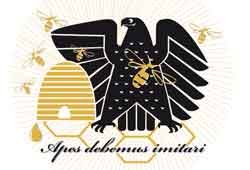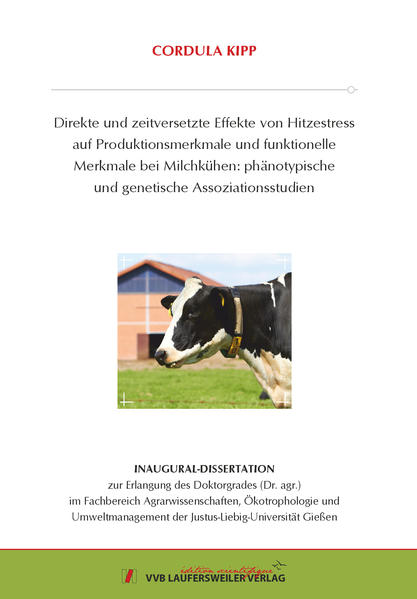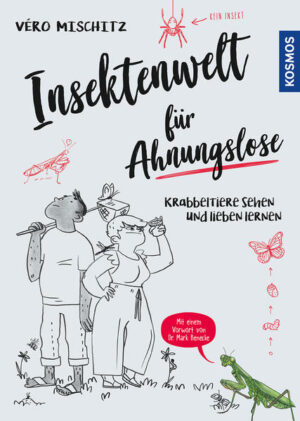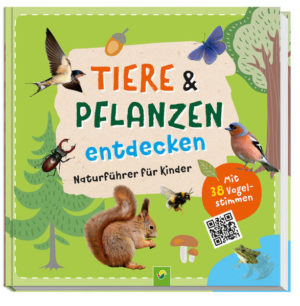- Softcover : 187 Seiten
- Verlag: VVB Laufersweiler Verlag
- Autor: Cordula Kipp
- Auflage: 1. Auflage, erschienen am 29.03.2022
- Sprache: Deutsch
- ISBN-10: 3-8359-7020-8
- ISBN-13: 978-3-8359-7020-5
- Größe: 21,0 x 14,8 cm
- Gewicht: 220 Gramm
Direkte und zeitversetzte Effekte von Hitzestress auf Produktionsmerkmale und funktionelle Merkmale bei Milchkühen: phänotypische und genetische Assoziationsstudien
39,80 €

HONIGHÄUSCHEN (BONN) – Global warming is a major challenge in future dairy cattle production systems. Therefore, the aim of the presented thesis was to analyze the effect of direct and time-delayed heat stress (HS) effects on production, fertility, health, longevity and physiology of dairy cows on a phenotypic and a genetic scale. „Direct“ HS means that the measured traits respond timely directly to climatic conditions. Thus, the temperature-humidity index (THI) measurement and phenotype recordings were close in time. „Time-delayed“ includes the effects of prenatal HS during late gestation of the dam on traits recorded in daughters, which were recorded trait-specifically months to years after the HS event. Chapter 1 introduces the effects of global warming. In addition, the state of the art regarding direct and delayed HS effects on dairy cows is presented. The third part of the chapter focuses on genetic aspects of HS as well as breeding for heat tolerance as a possible solution. The first study (Chapter 2) quantifies the direct HS effects on production, fertility and health traits of lactating cows, and defines HS thresholds. Temperature and relative humidity were recorded in the barn. The THI of the test-day and of the previous week were considered as continuous climatic descriptors. With regard to both periods, milk protein content decreased almost linearly with increasing THI. Protein yield decreased beyond THI = 68. Due to internal metabolic heat production, cows in the early stage of lactation within the first 100 days in milk reacted more sensitive to HS than cows in the middle or late lactation stage. For test-day THI > 70, milk urea nitrogen substantially increased. Heat stress effects of the previous week on milk urea nitrogen were less obvious. The fertility trait „number of inseminations per day“ reflects ovulation processes and heat detection. The detrimental effect of THI > 60 at the insemination date and at the previous week on number of inseminations per day was very similar. For insemination success, the identified HS threshold at the insemination date was THI = 65. Temperature-humidity indexes from the previous week had only moderate detrimental effect on insemination success. The incidences of clinical mastitis, retained placenta and puerperal disorders increased with increasing average THI from day 0 to 5 postpartum. Incidences for interdigital hyperplasia also increased with increasing THI from the previous week. In contrast, dermatitis digitalis decreased with increasing THI. Associations between THI and disease incidences were almost linear and no clear HS thresholds could be identified. The HS thresholds for production and fertility traits suggest the installation of cooling technique beyond a THI of 60. Chapter 3 focuses on the time-lagged effect of intrauterine HS during the last eight weeks of gestation (the maternal dry period) on the offspring performances. In 80 separate runs, the climatic effects of each eight single weeks on various traits of production (measured on the first test-day in first lactation), fertility and longevity were evaluated separately. Except for protein content, milk urea nitrogen and somatic cell count, intrauterine HS displayed unfavorable effects, but effects varied by week. THI ? 50 from all eight single weeks before calving had unfavorably significant effects on fat percentage, interval from calving to first insemination (after first calving) and length of productive life. Heat stress (TH ? 60) during the last three weeks of calving reduced offspring milk yield. Non-return-rate after 56 days (NRR56) in heifers decreased with increasing THI during the last six weeks before calving. Milk yield per day of life and lifetime productivity in milk yield decreased as a result of high THI during the last four weeks before calving. Metabolic and immune system adaptations were discussed as physiological reasons for long-term, delayed HS effects. From a practical perspective, the results suggest to provide HS abatement to dry cows. The aim of the third study (Chapter 4) was to analyze time-lagged HS effects during late gestation on genetic co(variance) components in dairy cattle across generations for production, female fertility and health traits. Alterations of additive genetic variances and heritabilities were trait specific and indicated pronounced genetic differentiation due to intrauterine HS for NRR56 and health traits (clinical mastitis, dermatitis digitalis and endometritis during first lactation), but decreasing genetic variation for milk yield and interval from calving to first insemination. Genetic variances and heritabilities for fat content and somatic cell count increased slightly due to intrauterine HS (THI > 67). Genetic correlations smaller than 0.80 indicated genotype by environment interactions (G×E) for NRR56, clinical mastitis, dermatitis digitalis and endometritis. In contrast, no G×E were observed for the high heritable production traits and interval from calving to first insemination. Selection of thermotolerant animals with stable estimated breeding values, independent from time-lagged environmental impact, is recommended to prevent genotype by HS interactions in offspring generations. Chapter 5 deals with variations of genetic parameters and variance components for physiological cow traits as a function of direct THI (average hourly THI of trait recording). The study based on a dataset including the German local breed Deutsches Schwarzbuntes Niederungsrind. Physiological traits considered respiration rate, pulse frequency, body temperature, vaginal temperature and surface temperature recorded via infrared thermography for different segments of the cow body. Additive genetic variances and heritabilities increased with increasing THI, implying more accurate genetic differentiation under HS conditions. Genetic correlations of the same trait measured at THI > 65 and THI ? 65 were 0.80 or below, indicating G×E. At the beginning of chapter 6, the topic of this thesis – the influence of global warming on dairy cows – is considered in reverse. The effect of ruminal methane emission on global warming is discussed. Further, epigenetic modifications are evaluated as an explanation for time-lagged effects of intrauterine HS and as a challenge for animal breeding. Subsequently, environmental descriptors for G×E, other than HS, are considered. The modification of the animals environment is discussed as a potential solution. As indicator traits for heat tolerance, physiological traits, the extent of the decline in milk production during HS and fatty acid profiles, are discussed. These indicator traits can be used for breeding for heat tolerance, as this is a second solution approach for dealing with progressive HS events. Further, a recommendation for the implementation of heat tolerance in the breeding program of the German Holstein population is formulated. Concludingly, genetic markers for heat tolerance in genomic selection approaches, are presented. In summary, the results of this thesis indicate that dairy cows suffer from HS even in temperate climates such as in Germany. High temperatures in combination with high humidity during the complete production cycle lead to significant impairments in a variety of traits. Hence, the results from the comprehensive study supports the installation of cooling technique not only in lactating, but also in dry cows. Heat stress had effects on genetic parameters and breeding values, even from an across-generation perspective. Hence, it is i) imperative to consider heat stress aspects in official genetic evaluations, and ii) to study the phenomenon time-lagged HS in ongoing molecular genomic studies focusing on possible epigenetic mechanisms.
Über „Direkte und zeitversetzte Effekte von Hitzestress auf Produktionsmerkmale und funktionelle Merkmale bei Milchkühen: phänotypische und genetische Assoziationsstudien“
Das vorliegende Sachbuch zu Themen aus Umwelt und Natur „Direkte und zeitversetzte Effekte von Hitzestress auf Produktionsmerkmale und funktionelle Merkmale bei Milchkühen: phänotypische und genetische Assoziationsstudien“ wurde erarbeitet und verfasst von Cordula Kipp. Dieses Sachbuch erschien am 29.03.2022 und wurde herausgegeben von VVB Laufersweiler Verlag.
Bücher wie „Direkte und zeitversetzte Effekte von Hitzestress auf Produktionsmerkmale und funktionelle Merkmale bei Milchkühen: phänotypische und genetische Assoziationsstudien“ sind im Onlineshop des Honighäuschens bestellbar. Online bestellte Fachbücher zur Imkerei und zu anderen Themen der Umwelt und des Artenschutzes sind zu den üblichen Öffnungszeiten auch direkt im Buchladen Bundesamt für magische Wesen in Bonn, der Stauhauptstadt von Nordrhein-Westfalen abholbar und werden auf Wunsch verschickt.
Das Thema Bienensterben, Rückgang von Insekten und allgemeines Artensterben ist in aller Munde und das Honighäuschen als frühere Bioland Imkerei hat sich von Anfang an daran beteiligt. Mehr als 35 Jahre Imkereierfahrung nahmen ihren Anfang 1982 mit den ersten eigenen Bienen.

Der zehnjährige Junge, der 1977 einem Hamburger Imker über die Schulter schaute; der Fünfzehnjährige, der mit der Imkerei in Zeiten begann, in denen es noch keine Varroamilbe gab; der achtzehnjährige Fahrschüler, der lernte, dass man die Windschutzsscheibe seines Autos nach einer längeren Fahrt von Insekten säubern muß; der zwanzigjährige Student, der für seine Bienen einen Platz in Bonn suchte; der dreißigjährige Berufsimker, der seinen Bienen quasi eine Gutenachtgeschichte erzählte und sich den Kopf zerbrach, wie man die Umwelt mit ihren Bienen, Wespen, Schmetterlingen und andere blütenbesuchenden Insekten vor den Machenschaften der Agrargiftindustrie und der Gleichgültigkeit agrarindustriehöriger Politiker schützt; der Imker, der nicht nur auf dem Weihnachtsmarkt Bonn die Öffentlichkeit suchte, um bei Führungen an den Bienen auf dem Dach der Bundeskunsthalle zu erleben, dass Kinder (und deren Helikoptermuttis!) Angst vor Schmetterlingen hatten, bis hin zum Begleiter von Forschungsprojekten zu den Riesenhonigbienen Nepals oder den Killerbienen Afrikas, stellt fest, dass etwas sehr im Argen liegt in unserem Umgang mit der Umwelt.
Es sollte jedem bewußt sein, dass die Haltung „Natur ja, aber bitte woanders!“ nicht in Ordnung ist. Machen wir so weiter, werden wir Insekten und andere Tiere irgendwann nur noch in Foto- und Bildbänden finden.
Die wunderschöne Welt der Natur

In unserem Online-Buchshop finden Sie viele Bücher wie „Direkte und zeitversetzte Effekte von Hitzestress auf Produktionsmerkmale und funktionelle Merkmale bei Milchkühen: phänotypische und genetische Assoziationsstudien“, die Ihnen die fantastische Welt der Bienen, Wespen, Ameisen, Hornissen und Schmetterlinge sowie anderer Insekten näherbringen.
Aber nach wie vor stehe ich Ihnen auch gern zu einem Gespräch oder zu einer Beratung im Umgang mit Bienen, Wespen, Hornisse, Wildbienen und Hummeln zur Verfügung, wenn Sie Fragen haben. Besuchen Sie uns in Bonn im Bundesamt für magische Wesen.
Und natürlich gibt es auch weiterhin Honig, Bienenwachskerzen und Met bei uns und zwar das ganze Jahr – nicht nur zu Weihnachten.
| Gewicht | 220 g |
|---|---|
| Größe | 21 × 14,8 cm |
Marke
VVB Laufersweiler Verlag
Nur angemeldete Kunden, die dieses Produkt gekauft haben, dürfen eine Bewertung abgeben.





Bewertungen
There are no reviews yet